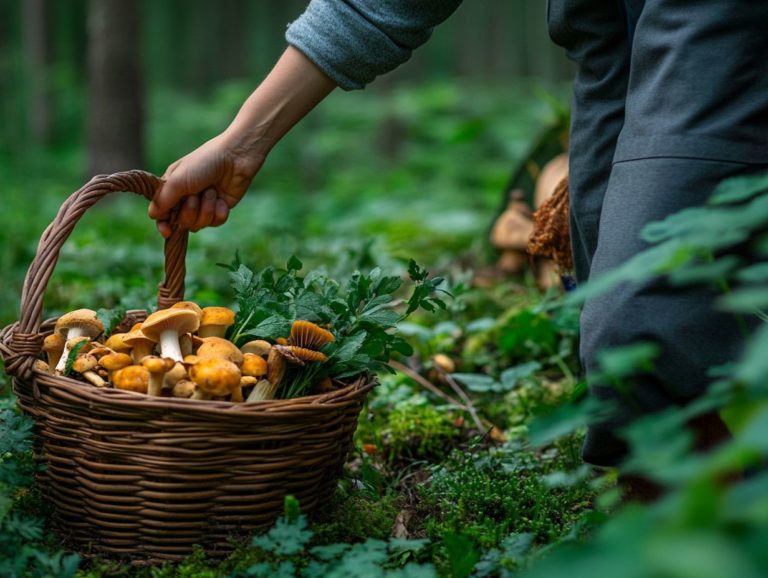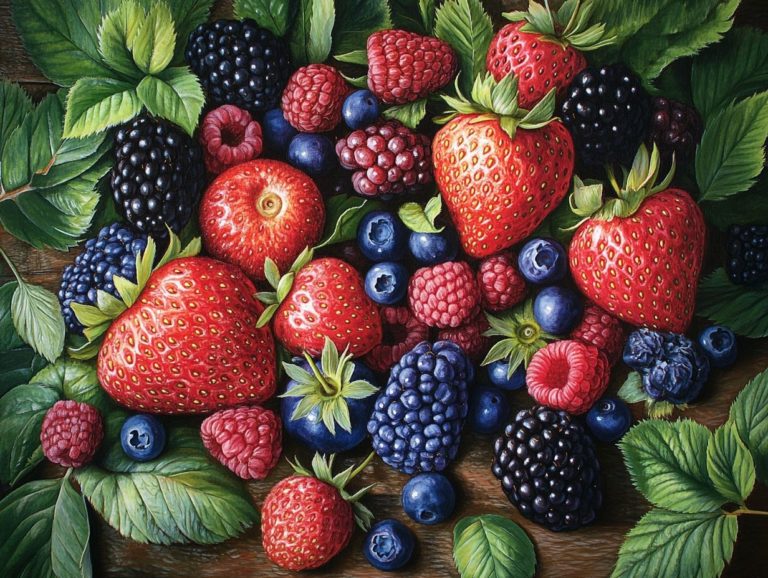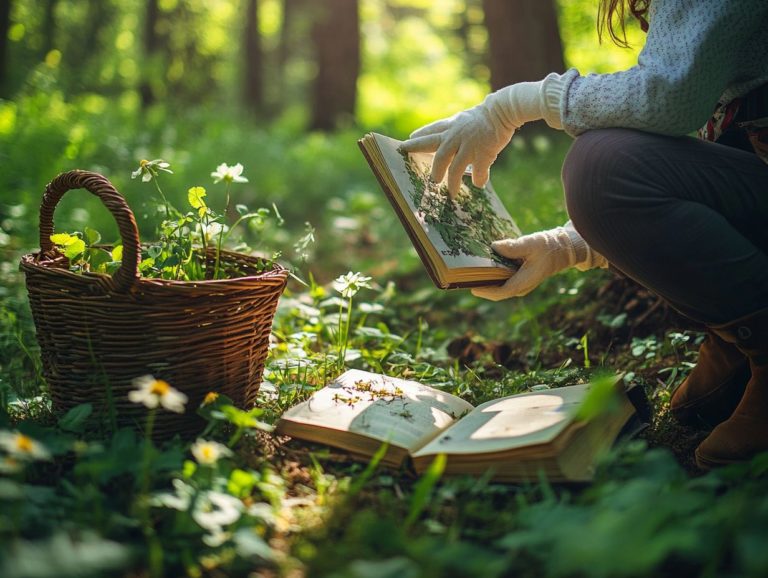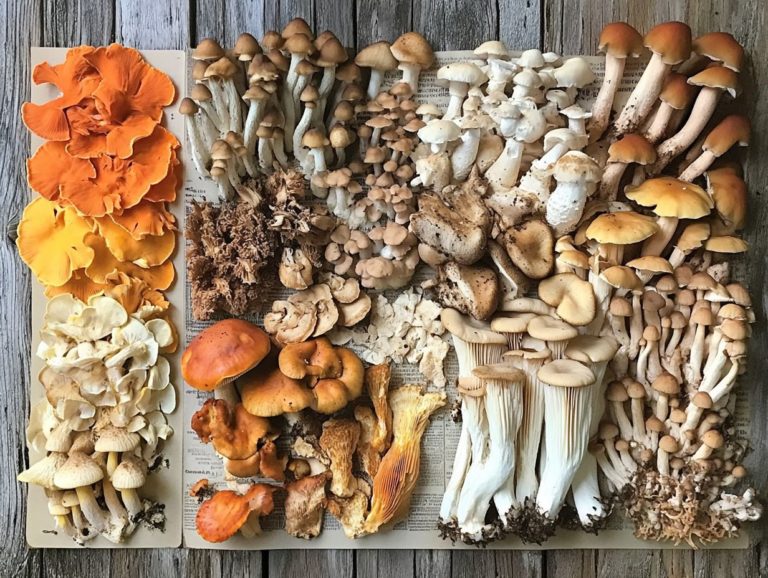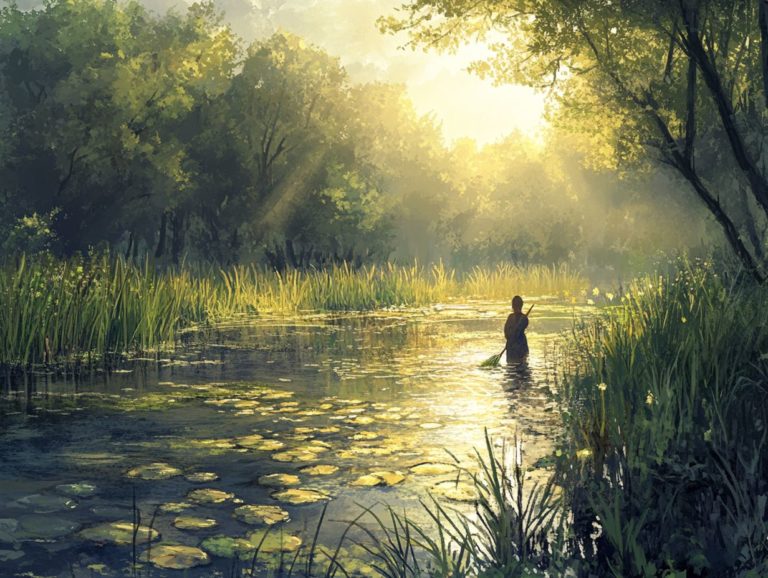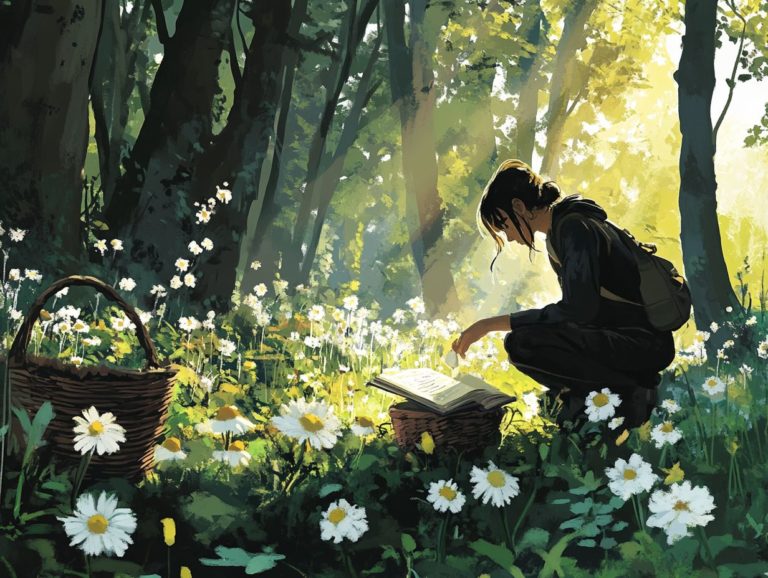How Do I Safely Prepare Wild Edibles?
Exploring the world of wild edibles can be both thrilling and rewarding. It provides you with a unique opportunity to connect with nature while enhancing your culinary skills.
As you venture into foraging, it s essential to approach it with knowledge and caution. This guide will equip you with the fundamentals of distinguishing safe plants from their poisonous counterparts, employing proper harvesting techniques, and preparing delightful meals from your wild finds.
This guide will also highlight common pitfalls to avoid, ensuring your foraging journey is both safe and enjoyable. Get ready to embark on a thrilling adventure into the world of wild edibles!
Contents
Key Takeaways:
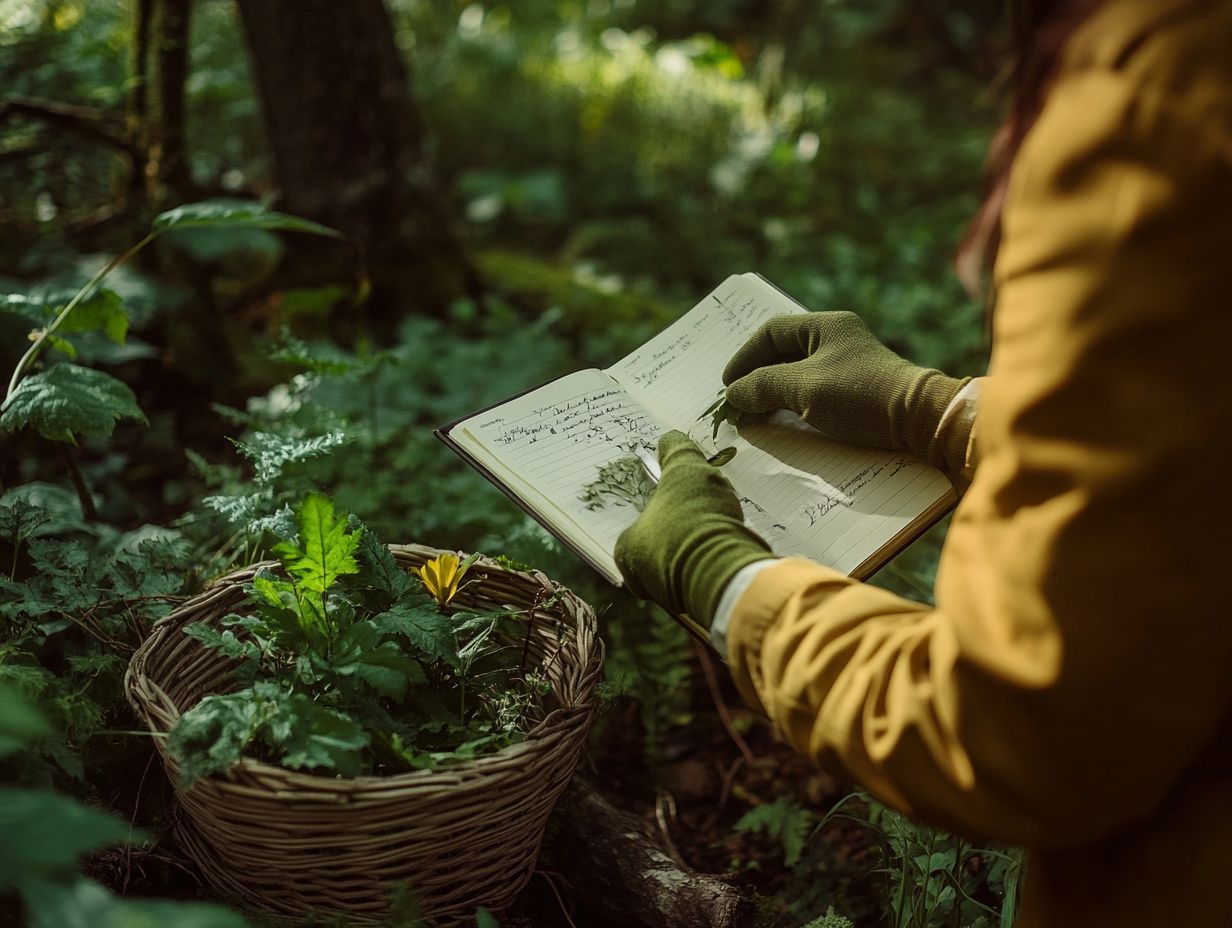
- Always correctly identify safe and poisonous plants before harvesting any wild edibles. It is crucial to have a thorough understanding of the plants in your area.
- Proper cleaning and storing techniques are essential for safely preparing wild edibles. Avoid common mistakes and follow recommended methods to reduce the risk of illnesses caused by contaminated food.
- When cooking wild edibles, be sure to follow recipes and cooking methods specifically designed for them. This will enhance their flavor and ensure they are safe to consume.
What are Wild Edibles?
Wild edibles encompass a delightful array of plants, fungi, and berries that you can find in nature. They provide a sustainable and nutritious food source to enhance your diet. Picture vibrant dandelion greens and savory morel mushrooms foraging for these wild treasures not only delights your taste buds but also deepens your connection to the natural world.
By understanding what wild edibles are and recognizing the nutritional benefits of edible flowers and wild garlic, you can embrace the practice of foraging both responsibly and joyfully.
Foraging, in its essence, promotes sustainability by encouraging you to harvest food from your surroundings while avoiding the environmental costs associated with conventional agriculture. You will find wild edibles like juicy blackberries, packed with antioxidants, nutrient-packed stinging nettle, and versatile ramps that can elevate the flavor of various dishes.
As you explore local ecosystems, you cultivate a deeper appreciation for your environment and reduce your carbon footprint. Ultimately, integrating these wild foods into your meals invites not just nutrition but also flavor, fostering a sustainable connection to nature’s rich offerings.
Safety Precautions for Harvesting Wild Edibles
When foraging for wild edibles, understanding how to handle wild edibles safely is essential to ensure your experience is both pleasurable and devoid of peril.
Foraging safety encompasses the ability to recognize poisonous plants like the Death Cap and Monkshood, which can present significant risks if misidentified. By educating yourself on plant identification and employing sound foraging strategies, you can confidently gather nutritious foods while protecting your health and that of your companions, including children who are joining you in this enriching outdoor adventure.
Identifying Safe and Poisonous Plants
Identifying safe and poisonous plants is an essential skill for anyone interested in foraging for wild edibles. This skill can transform your foraging adventures! It can mean the difference between a delightful meal and a hazardous run-in with toxic flora.
Familiarizing yourself with plants like dandelion and chickweed both of which are safe to eat while understanding the traits of poisonous variants such as oleander and hemlock can significantly enhance your foraging experience.
Learning the details of identifying plants allows you to relish the diverse offerings of edible wild foods while ensuring your safety during your foraging adventures.
To effectively distinguish between these two categories, focus on key characteristics like leaf shape, flower color, and growth habitat. For instance, edible greens typically showcase a vibrant green hue and a tender texture, while toxic plants may appear shiny or waxy.
Don’t overlook seasonal changes; certain plants may only be identifiable at specific times of the year, with some tasty options sprouting in spring and others flourishing during the summer months.
By engaging with local foraging communities and utilizing resources like field guides and apps, you can deepen your understanding. This will enable you to confidently identify safe versus poisonous plants in your environment. Dive into the exciting world of foraging today with the right knowledge!
Proper Harvesting Techniques
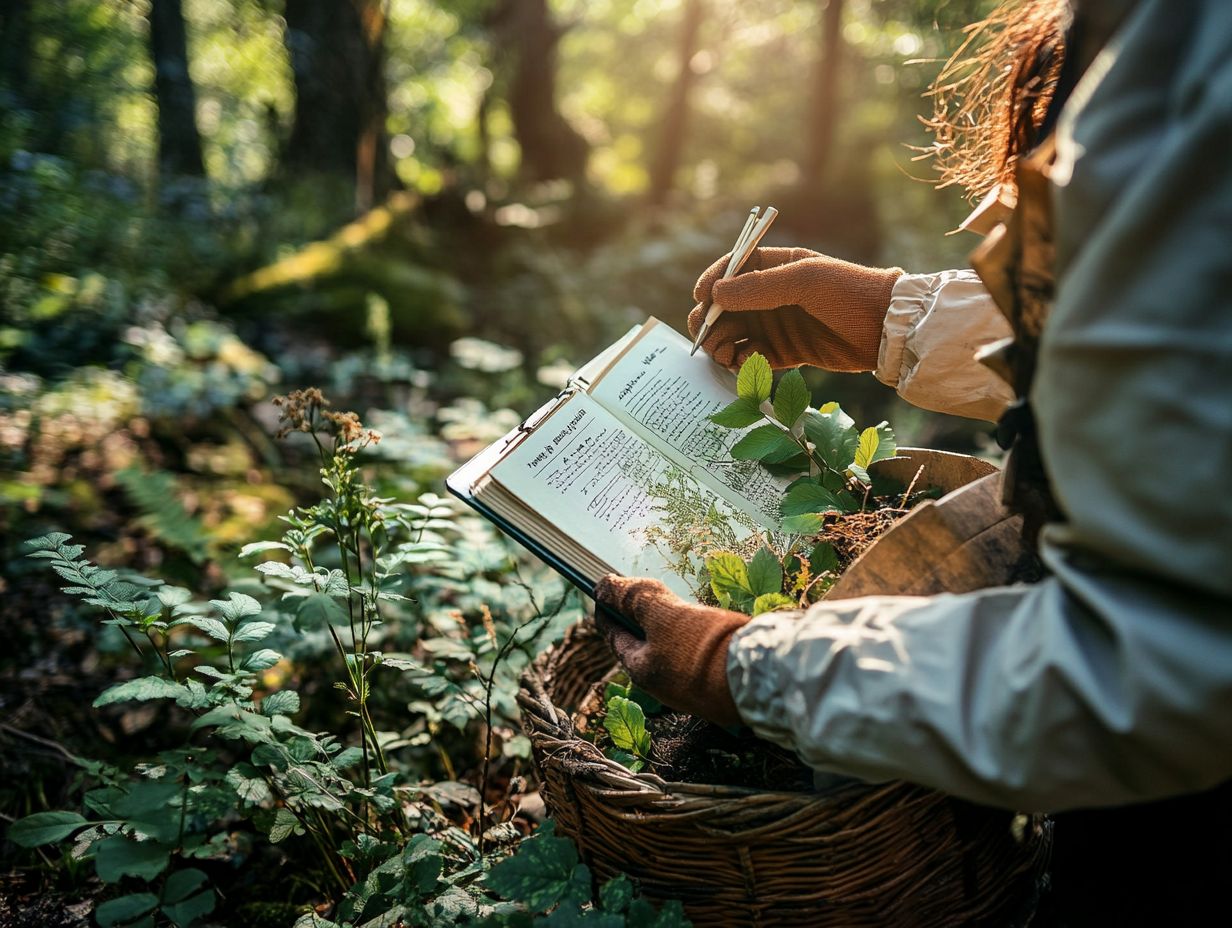
Employing proper harvesting techniques is essential when you re foraging for wild edibles. Not only does it maximize your yield, but it also plays a vital role in preserving the natural environment for generations to come.
By practicing sustainable harvesting methods, you can make a significant contribution to ecosystem health and encourage the regrowth of wild plants. For example, when collecting mushrooms, gently twist them from the ground instead of pulling. This minimizes disturbance to the mycelium, which is the root network of mushrooms that helps them grow, and promotes future growth.
When harvesting plants like nettles, take only the upper leaves to allow the base to thrive and regenerate. Emphasizing the importance of biodiversity, respecting local wildlife, and understanding seasonal changes can greatly enhance your foraging experience.
Engaging in responsible practices not only enriches your journey but also fosters a lasting relationship with nature.
Preparing and Cooking Wild Edibles
Preparing and cooking wild edibles demands your attention to essential cleaning and storing techniques, as well as knowing how to preserve wild edibles, alongside creative recipes that showcase their distinctive flavors.
Whether it’s the vibrant allure of edible flowers or the earthy richness of morel mushrooms, mastering the art of cleaning, storing, and cooking these ingredients can truly elevate your culinary endeavors.
By combining time-honored cooking methods with innovative recipes, you can savor the nutritional advantages of wild edibles while indulging in their complex tastes in every dish you create.
Cleaning and Storing Techniques
Proper cleaning and storage techniques are essential for preserving the freshness and flavor of your wild edibles. This ensures that your foraged finds remain safe and enjoyable to eat. Additionally, learning how to forage edible plants safely is crucial, as rinsing edible berries and gently cleaning mushrooms like morels are important steps for removing dirt and contaminants.
By employing adequate storage methods like refrigerating delicate plants such as chickweed and drying hardier options you can savor the taste of your wild edibles long after they’ve been harvested.
It’s also important to differentiate between the cleaning processes for various types of wild edibles. For instance, leafy greens like lamb’s quarters and dandelion should be soaked in cold water to dislodge grit before rinsing. If you’re unsure about safe options, learning how to identify safe wild edibles is crucial. Similarly, roots such as wild carrots require a thorough scrubbing under running water.
Once cleaned, understanding the ideal storage conditions like using breathable bags for herbs or glass jars for mushrooms can optimize their lifespan. When properly prepared, these wild delicacies can serve as nutritious additions to your meals, enriching your culinary experiences and deepening your connection to nature.
Recipes and Cooking Methods
Exploring recipes and cooking methods for wild edibles opens up a world of culinary creativity. You can incorporate unique flavors like those found in morel mushrooms or wild garlic into your meals.
The satisfaction of foraging these remarkable ingredients from nature enhances your cooking experience. It also helps you feel more connected to nature.
Imagine crafting a vibrant spring salad featuring dandelion greens, accented with a tangy vinaigrette made from foraged berries. Or creating a rich risotto infused with the earthy notes of wild mushrooms.
These dishes not only tantalize your taste buds but also provide high vitamin and antioxidant content, promoting your overall health.
Embrace the diversity of wild edibles to unlock culinary inspiration, elevating both your everyday meals and special occasions to new heights.
Common Mistakes to Avoid
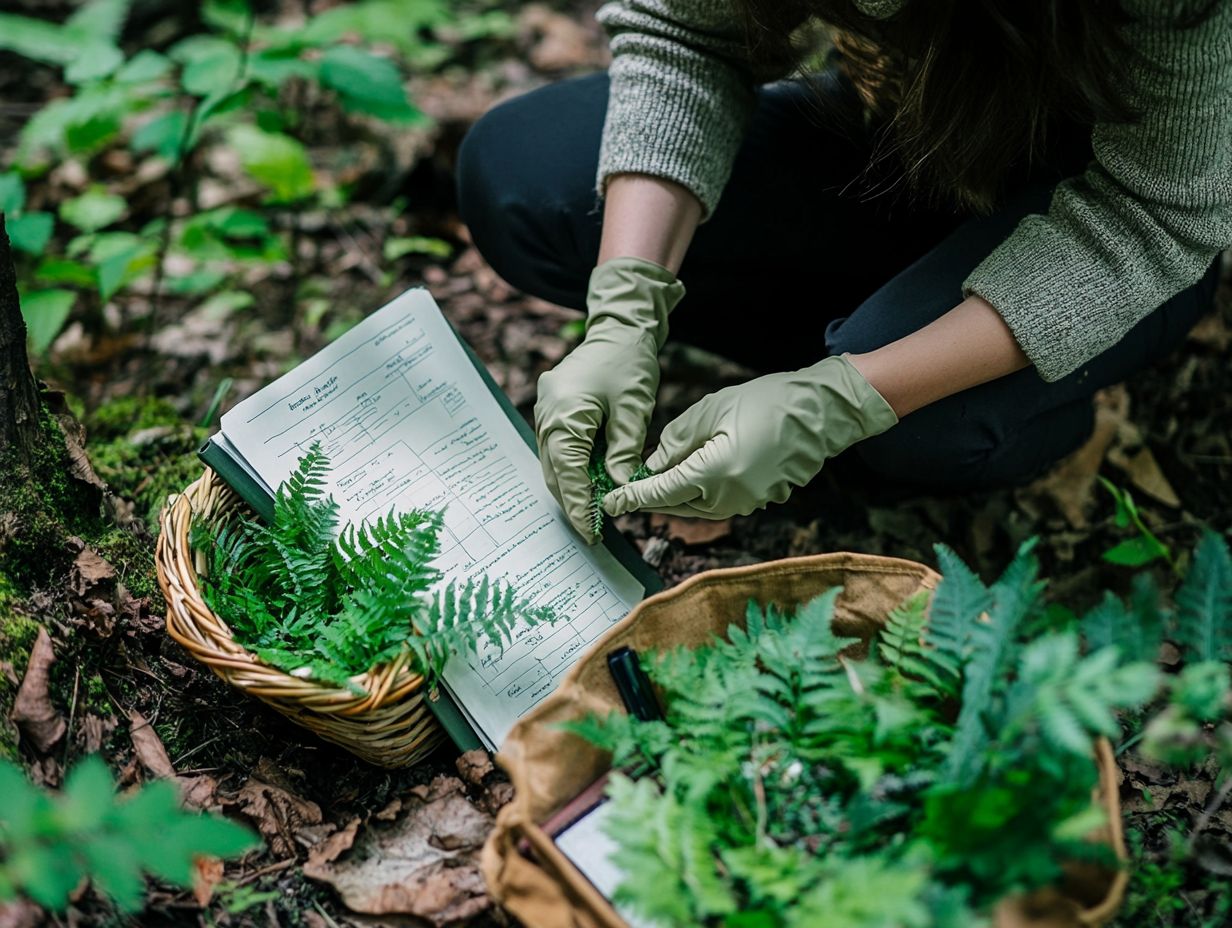
As you embark on your foraging journey, being mindful of common mistakes can significantly elevate your experience and ensure your safety. Many beginners overlook crucial precautions.
- Misidentifying edible plants
- Neglecting to learn about toxic varieties, like the Death Cap.
Familiarizing yourself with these potential pitfalls will lead to a richer and more rewarding foraging experience!
Precautions for Beginners
Foraging can be a truly rewarding adventure. However, as a beginner, you need to take specific precautions to fully enjoy the bounty of wild edibles nature offers.
Understanding your local ecosystem is crucial. Different regions host unique species that can range from edible delights to toxic surprises.
Participating in local foraging workshops or engaging in online forums can significantly enhance your knowledge. You’ll gain invaluable insights from seasoned foragers about seasonal availability and taste preferences.
Practicing sustainable foraging harvesting plants without harming their populations is essential. Ensure that you only harvest a portion of any plant, allowing it to regenerate and protecting the environment in the process.
By adhering to these best practices, you minimize risks while immersing yourself in the enriching world of foraging for wild edibles.
Common Misidentifications
Common misidentifications can pose serious health risks when you’re foraging for wild edibles. It’s essential to learn the distinguishing features of both safe and toxic species.
For example, the edible chickweed is often mistaken for the toxic American wisteria. This highlights the importance of careful observation and thorough research in plant identification.
Familiarize yourself with these common pitfalls to navigate the wild with greater confidence. Following safety guidelines for harvesting wild edibles ensures your safety while enjoying the diverse offerings of nature.
Also, get acquainted with other look-alikes, like the wild carrot, which can be confused with poisonous hemlock. Always pay close attention to leaf shapes, flower structures, and even the odor of the plants. These can be key indicators of edibility.
Utilizing resources such as field guides or smartphone apps dedicated to plant identification can streamline your process. Additionally, joining local foraging groups can provide invaluable firsthand experience and knowledge.
Frequently Asked Questions
How do I safely prepare wild edibles?

To safely prepare wild edibles:
- Properly identify the plants you are foraging for.
- Only choose plants that are edible and non-toxic.
- Clean and cook the plants properly before consuming them.
What are some common mistakes to avoid when preparing wild edibles?
Some common mistakes to avoid include:
- Mistaking toxic plants for edible ones.
- Not properly cleaning the plants.
- Not cooking them thoroughly.
- Avoid picking plants from contaminated areas at all costs for your safety!
Share your wild edible experiences in the comments below!
How can I identify edible plants in the wild?
To identify edible plants, research the specific types in your area. You can also consult a local expert or use a field guide when searching for wild plants.
How should I clean wild edibles?
Rinse wild edibles thoroughly with cold water. Additionally, consider following safety tips for foraging by using a mild vinegar solution to help remove dirt and any insects.
Do I need to cook all wild edibles before eating them?
Yes! Cooking wild edibles is essential. It not only enhances flavor but also kills harmful bacteria or parasites, so be sure to follow safety tips for wild edibles.
What precautions should I take when preparing wild edibles?
Wear gloves and long sleeves when gathering wild edibles to protect yourself. Additionally, learning how to prepare wild edibles in advance can help you store and transport your finds carefully to avoid contamination.

